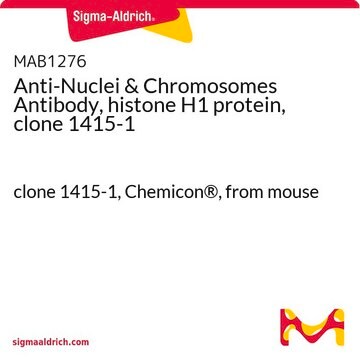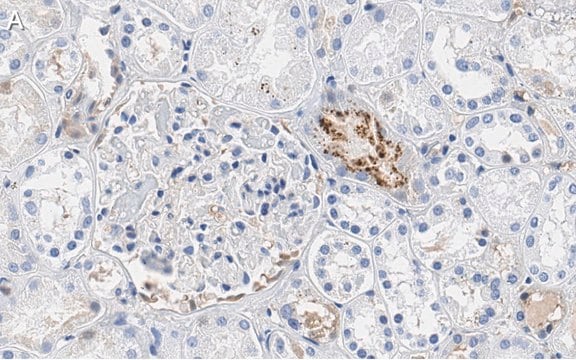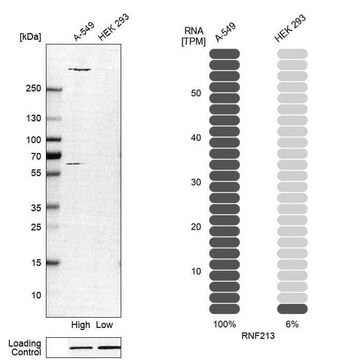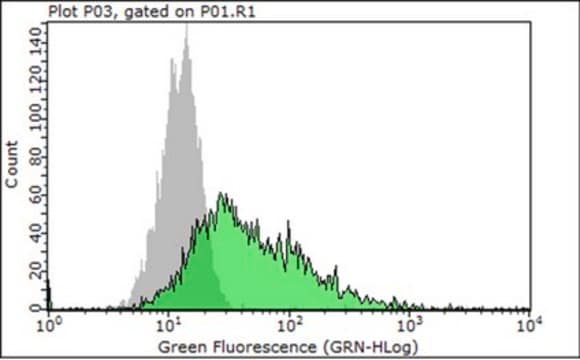MAB1059
Anti-Pigment Epithelium Derived Factor Antibody, clone 10F12.2
clone 10F12.2, Chemicon®, from mouse
Sinonimo/i:
pigment epithelium-derived factor, proliferation-inducing protein 35, serine (or cysteine) proteinase inhibitor, clade F (alpha-2
antiplasmin, pigment epithelium derived factor), member 1, serpin peptidase inhibitor, clade F (alpha-2 antiplasmin
Scegli un formato
CHF 424.00
Spedizione prevista il28 maggio 2025
Scegli un formato
About This Item
CHF 424.00
Spedizione prevista il28 maggio 2025
Prodotti consigliati
Origine biologica
mouse
Livello qualitativo
Forma dell’anticorpo
purified immunoglobulin
Tipo di anticorpo
primary antibodies
Clone
10F12.2, monoclonal
Reattività contro le specie
human
Reattività contro le specie (prevista in base all’omologia)
rat
Produttore/marchio commerciale
Chemicon®
tecniche
ELISA: suitable
immunocytochemistry: suitable
immunohistochemistry: suitable
western blot: suitable
Isotipo
IgG2a
N° accesso NCBI
N° accesso UniProt
Condizioni di spedizione
wet ice
modifica post-traduzionali bersaglio
unmodified
Informazioni sul gene
human ... SERPINF1(5176)
Descrizione generale
Specificità
Immunogeno
acids 196-347 of human PEDF tagged with GST on the N-terminal was expressed in E. Coli. GST-PEDF is about 46 kDa on SDS-PAGE.
Applicazioni
Neuroscience
Neurochemistry & Neurotrophins
Recognizes a protein with a molecular weight of ~46 kDa when tested against immunogen. Western blot positive control is available (Catalog number AG672)
ELISA:
A previous lot of this antibody was used on ELISA.
Immunocytochemistry:
A previous lot of this antibody was used on Immunocytochemistry.
Immunohistochemistry:
A previous lot of this antibody was used on frozen sections.
Optimal working dilutions must be determined by end user.
Qualità
Western Blot Analysis:
1:1000 dilution of this lot detected pigment epithelium on 10 μg of human placenta lysate.
Descrizione del bersaglio
Stato fisico
Stoccaggio e stabilità
Risultati analitici
Eye tissue.
Altre note
Note legali
Esclusione di responsabilità
Non trovi il prodotto giusto?
Prova il nostro Motore di ricerca dei prodotti.
Raccomandato
Codice della classe di stoccaggio
10 - Combustible liquids
Classe di pericolosità dell'acqua (WGK)
WGK 2
Punto d’infiammabilità (°F)
Not applicable
Punto d’infiammabilità (°C)
Not applicable
Certificati d'analisi (COA)
Cerca il Certificati d'analisi (COA) digitando il numero di lotto/batch corrispondente. I numeri di lotto o di batch sono stampati sull'etichetta dei prodotti dopo la parola ‘Lotto’ o ‘Batch’.
Possiedi già questo prodotto?
I documenti relativi ai prodotti acquistati recentemente sono disponibili nell’Archivio dei documenti.
Active Filters
Il team dei nostri ricercatori vanta grande esperienza in tutte le aree della ricerca quali Life Science, scienza dei materiali, sintesi chimica, cromatografia, discipline analitiche, ecc..
Contatta l'Assistenza Tecnica.








